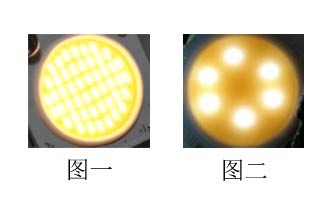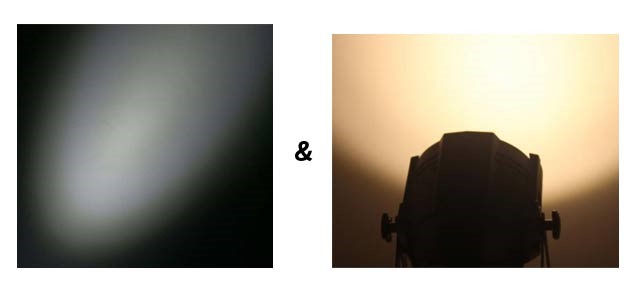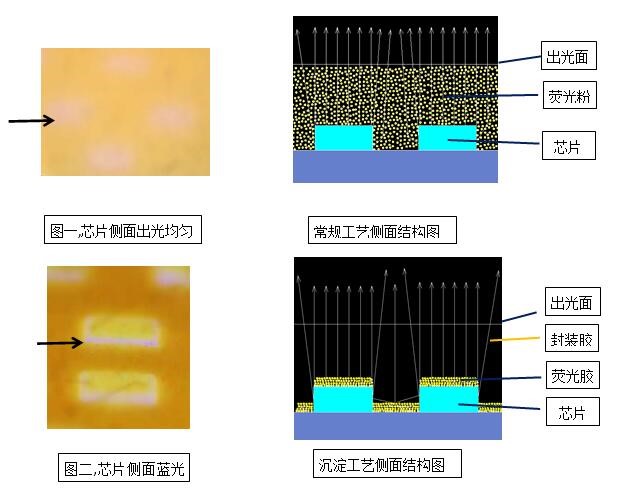As the domestic LED industry chain matures, the performance of raw materials of products is continuously optimized, and the product performance differences of various LED package manufacturers are gradually reduced. In order to compete for market share, the price war continued to be staged, and the price reduction of packaged products continued to set a new record. In this context, optimizing product mix and equipment scale production has become an important way to make profits in the LED packaging industry.
Stability determines success or failure, and details determine development. Therefore, the details of the product process will be an important factor in the stability of the packaged product.

Dai Xiaodong, head of the COB project at Zhaochi R&D Center, said, “Through our visits to some customers, most of the application technicians predicted that the application of COB precipitation process products will usher in a big outbreak.â€
All along, the well-known COB manufacturers in China are basically using the COB precipitation process. The products produced by the company have high-end appearance, low product colloid temperature, and the power of the same luminous surface can be further improved, the optical density is greater, and the advantages are more obvious. However, as most domestic manufacturers began to produce precipitated products in batches, the advantages of international COB plants gradually decreased.
So, does the COB precipitation process really change the quality of the product? In this regard, Dai Xiaodong analyzed the effect of phosphor precipitation technology on the light type of the product.
It is well known that the blue chip excitation phosphor is the most conventional white light fabrication method. Under ideal conditions, the evenly distributed phosphor is excited by uniform blue light, and the light exit surface will lead to uniform white light, and the product presents a perfect light type, as shown in Fig. 1. . However, most of the current COB products are not the same, as shown in Figure 2, because the larger light-emitting surface chip is less, the power is low, the phosphor around the chip is fully excited, and the color is white or bluish. At the same time, the phosphors that are relatively far away from the chip cannot be fully excited, and the color is yellowish, resulting in uneven light emission, and abnormalities such as yellow spots and blue hearts.

In the face of the above problems, we can usually solve the problem by modifying the light-emitting surface, increasing the number of chips, optimizing the chip arrangement, and optimizing the rubber surface structure, so that the application end can be optimized by lens optical design, increased drying, frosting, etc. . However, by designing a secondary optical lens to optimize the product light type, it will sacrifice too much luminous flux, and at the same time designing a high investment in mold opening will erode the profits of the enterprise. Therefore, the best design of the lamp bead is to improve the cost performance of the whole lamp.
In other words, we must not only pay attention to the shape design of the luminaire, but also pay attention to the light quality of the product. Under the consideration of comprehensive factors such as power, heat, light type and price, we will consider the choice of the precipitation process lamp bead when choosing the lamp bead. . Of course, as for the specific light type effect, it is also necessary to perform a combined test or a simulation test according to the lens (reflector cup).

Dai Xiaodong has found that the uniformity of the light type of the phosphor precipitation process product is worse than that of the conventional process. For example, the edge of the light pattern is jagged, and the local blue spot of the light type is obvious. The sedimentation process does not give us the perfect effect of illumination, which seems to be somewhat disappointing. Of course, the light quality of the precipitation process product can also be optimized, but it will sacrifice brightness and increase cost.
In response, some lens manufacturers analyzed that the COB product phosphors are thinner, which poses a challenge to the design of the lens (reflector), which requires more complex optical processing of stray light. Because part of the lens imaging problem is obvious, according to the principle of convex lens or Fresnel imaging, the product light type will restore the internal structure of the lamp bead, and the phosphor of the precipitation process product sinks into the bottom of the substrate, the rubber surface becomes clearer and clear, and the chip arrangement is more obvious. When the lens imaging problem is obvious, the precipitation process will be more difficult to align with the conventional non-precipitation process, and even some of the products will have blue spots.
Dai Xiaodong always believes that the key to solving the problem is to clarify the source and essence of the problem, and it needs to be solved from the source. The intermediate remedy can only be used as a temporary countermeasure, and the versatility is not strong. The microscopic analysis of the phosphor distribution in the precipitation process and the conventional process will be carried out below:

As shown in Figure 1, the conventional non-precipitated product has uniform light emission, and there is phosphor distribution around the chip and the light is relatively uniform. In Figure 2, the process product has a blue spot, the conventional chip has five-sided light, and the chip has fluorescence. The powder is covered, but the four sides of the chip are not coated with phosphor powder, and the other phosphors sink into the bottom of the substrate. The encapsulant has no phosphor, and the blue light on the side of the chip directly leads to the rubber surface, which becomes a blue spot in the light type.
How will the impact of the precipitation process products on the light type be improved?
To this end, Dai Xiaodong summarized the following four improvements:
Chip height selection
In order to increase the brightness of the chip, some chip manufacturers increase the brightness of the light surface by thickening the chip, and improve the brightness, and the precipitation process product should not use a chip that is too thick;
Phosphor thickness control
Control the degree of phosphor precipitation, keep the phosphor powder wrapped on the side of the chip, and the chip has no blue light overflow;
Chip density adjustment
High-density products have small chip spacing and high optical density. If the precipitation process is used, the light-type problem is also solved skillfully. As shown in the following figure, the product chip has a small pitch, no blue-side overflow problem on the chip side, and the product light type is good. In Figure 2, there is a noticeable uneven spot. At the same time, the chip density is too large, and the light on the side of the chip will not be exported, resulting in low light efficiency and low chip utilization, which increases the cost.

Product process selection
High-density blue light is on the phosphor. The phosphor is excited by blue light to convert light and heat. The light can be easily exported to the colloid, but the heat is difficult to dissipate. The reason is that the thermal conductivity of the silica gel is poor, and the heat of the phosphor cannot be quickly exported. , which leads to problems such as high colloidal temperature and aging and cracking of COB products. In fact, the relationship with the colloid temperature is very large, so the high wattage, high-density products use the precipitation process, the colloidal heat is small, the side of the chip has no obvious blue light overflow, the effect is perfect.
However, the small wattage product has a low colloidal temperature, and the precipitation process is of little significance, and the product light type has no advantage. It is recommended to carry out the process according to the product optical density and the colloidal temperature. Through continuous testing and verification, Zhaochi R&D personnel validate COB products with different power and different optical densities, classify products according to their properties such as light type, heat and stability, and redefine whether different products use precipitation process.
"In the future, we pay attention to the stability of the products, but also pay more attention to the overall lighting effect, better serve the customers, and at the same time give consumers the enjoyment of light quality." Dai Xiaodong finally mentioned.

3500 puffs disposable vape pen are so convenient, portable, and small volume, you just need to take them
out of your pocket and take a puff, feel the cloud of smoke, and the fragrance of fruit surrounding you. It's so great.
We are China's leading manufacturer and supplier of disposable vape puff bars,3500 puff vape bar,3500 puff vape rechargeable,
3500 puffs disposable vape,disposable vape bars 3500 puffs, and e-cigarette kit, and we specialize in Disposable Vapes,
e-cigarette vape pens, e-cigarette kits, etc.
3500 puff vape bar,3500 puff vape rechargeable,3500 puffs disposable vape,3500 puffs vape pen,disposable vape bars 3500 puffs
Ningbo Autrends International Trade Co.,Ltd. , https://www.vapee-cigarettes.com